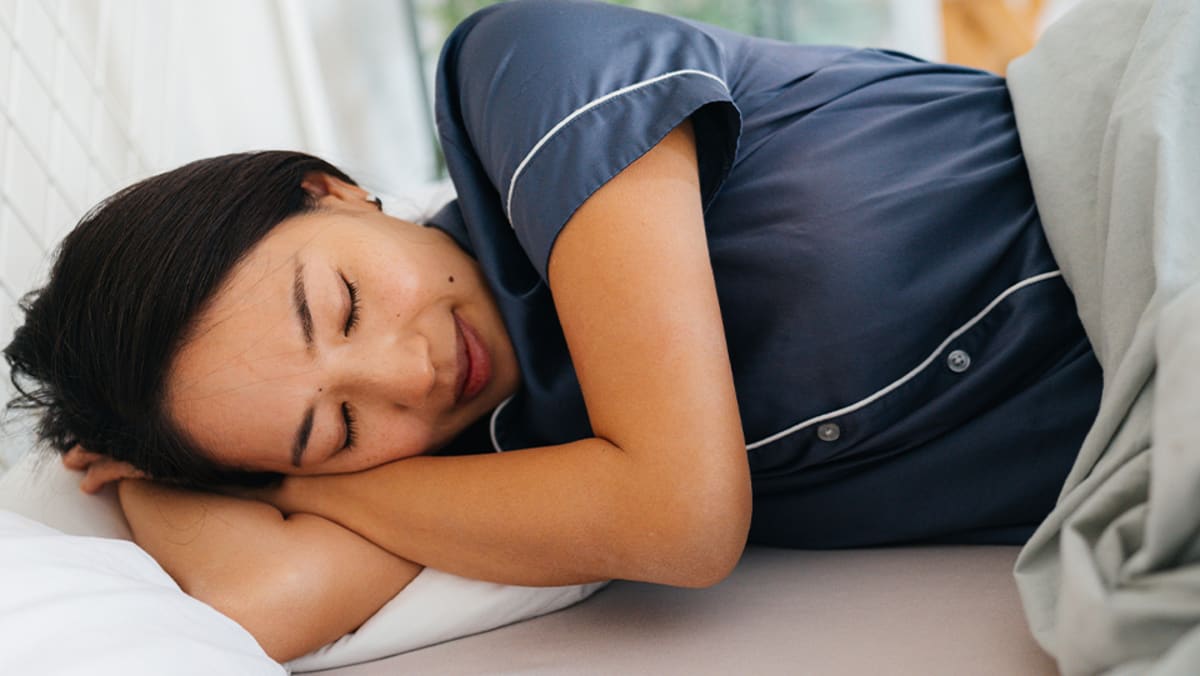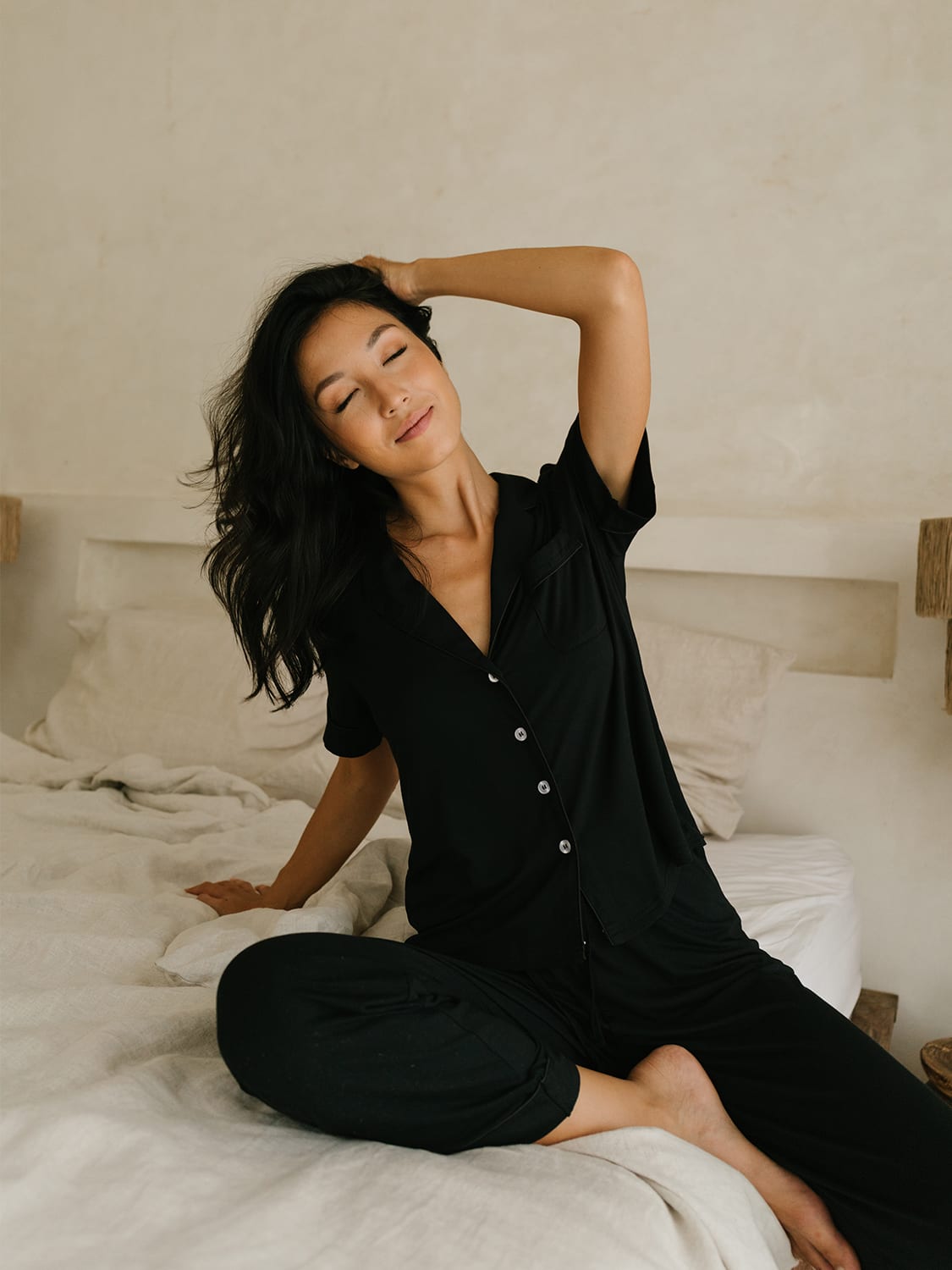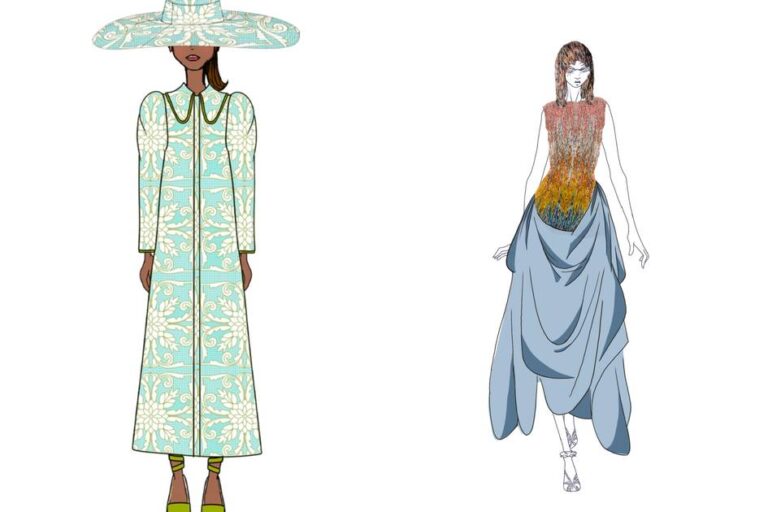Unlock Better Sleep: How the Right Pyjamas Can Enhance Rest

We spend a significant portion of our lives asleep, or attempting to. In our quest for a better night’s rest, we often fixate on expensive mattresses, blackout curtains, and white noise machines. However, we frequently overlook what we wear to bed, which is an important factor.
This aspect shouldn’t be dismissed.
Our choice of sleepwear can influence how quickly we relax, the depth of our sleep, and even our mood when we wake up.
Julian Lim, lead sleep psychologist at Somnus Sleep Wellness, emphasizes, “While sleepwear is not the main factor in sleep quality, it contributes in ways such as regulating temperature, ensuring comfort, and establishing pre-sleep routines.”
Founders of Selenightco, Nora Lim and Heng Juit Wen, believe that the right pyjamas do more than just cover you—they create a sense of comfort for both your body and mind.
The Impact of Evening Rituals
Consider your nightly routine. You may dim the lights, brew a soothing cup of chamomile tea, or open a meditation app. Changing into sleepwear plays a similar role—it’s a physical signal that your day is at an end.
“Rituals act as powerful cues for the brain,” explains Lim. “Switching into pyjamas signifies the end of work, indicating that it’s time to unwind. Over time, these actions create firm connections in your brain, easing the transition from alertness to relaxation.”
Essentially, consistently pairing an action—like donning pyjamas— with the outcome of sleep allows your brain to automate that connection.
“Switching out of clothes meant for working, cooking, or parenting into attire made specifically for rest sends a clear message to your body: it’s time to unwind.”
Selenightco focuses on this winding-down ritual. “We emphasize intentional details and temperature-regulating fabrics that facilitate relaxation, particularly in Singapore’s heat,” commented Heng.
Co-founder Nora Lim shares her inspiration: “One morning, I woke up in my husband’s old shirt and worn-out shorts, realizing there had to be a better way to begin the day—something that makes me feel good both physically and mentally. Wearing dedicated sleepwear enhances sensory experience and serves as a psychological cue for rest.”
The Significance of Dedicated Sleepwear

Many of us grew up wearing old gym shirts or university tees to sleep. Sleep expert Lim assures that this is acceptable, as long as they’re comfortable and consistent.
“Not everyone requires special sleepwear,” he states. “Having clothing designated for sleep can help establish a stronger mental link between your garments and rest. Consistency and comfort are what truly matter, not the price of the clothing.”
This distinction—focus on intention rather than luxury—is crucial. As Lim puts it: “Changing from daytime clothes into those designed for rest signals to your body that it’s time to relax.”
Comfort Begins with Fabric

Anyone familiar with humid nights knows that discomfort is the enemy of sleep.
“Discomfort leads to micro-arousals, or brief moments of awakening, that can disrupt sleep,” notes the expert. “Even if those awakenings aren’t remembered, your overall sleep quality can still be affected. Fabrics that are tight, scratchy, or that trap heat can prevent you from achieving restorative deep sleep.”
Your body temperature naturally decreases as you transition into sleep—it’s a fundamental biological process initiating rest. If your clothing traps heat or lacks breathability, it would interfere with this cooling process and keep you in lighter, more restless stages of sleep.
This is where choosing the right fabric becomes essential. “It needs to be soft, breathable, and thermoregulating,” adds Heng. “In our climate, the goal is to stay cool and dry in the humidity, while still being cozy in air conditioning.”
“Discomfort is sleep’s worst enemy.”
Natural or semi-synthetic materials like bamboo, cotton, or lyocell typically perform best. They wick away moisture, feel soft against your skin, and facilitate heat escape. Bamboo, notably, possesses natural temperature-regulating properties, keeping it cool to the touch in humid conditions.
On the contrary, polyester blends—often found in fast-fashion sleepwear—have the opposite effect. They trap moisture and heat against your skin and can retain odors more than natural fabrics. “While they may suit activewear, they aren’t our first choice for sleepwear,” Lim from Selenightco explained.
Attention to Detail Matters

While the fabric plays a key role, small design details can significantly impact comfort.
“One of the initial changes we implemented was moving to printed labels instead of sewn-on tags to avoid scratching or irritation during the night,” she said. “Comfort begins with eliminating minor distractions that can interrupt deep rest.”
Though seemingly insignificant, think about a scratchy tag at the back of your neck, a tight elastic waistband, or a seam rubbing against your shoulder. While these may not cause severe discomfort, they can keep your nervous system slightly activated, preventing you from fully relaxing into profound sleep.
Other thoughtful features in Selenightco’s designs—like ventilated back panels, relaxed fits, and soft waistbands—enhance airflow and allow freedom of movement, helping to maintain a balanced temperature throughout the night.
The objective is for your sleepwear to feel almost imperceptible. You shouldn’t notice what you’re wearing once you’re settled in bed.
The Connection Between Mind and Body
“Physically, clothing affects body temperature and comfort, which directly influences sleep depth.”
There’s also the psychological aspect of investment. “Sometimes, investing in sleep signifies its importance,” Lim says. “Feeling good in what you wear can foster a more positive mindset towards rest, making it easier to approach bedtime with intention rather than resistance.”
In recent years, sleepwear has evolved from being an afterthought to a key part of self-care.
“Post-COVID, there has been a significant shift in how people view sleepwear and ‘home wear’,” says Lim from Selenightco. “With many working from home, customers are seeking pieces that are comfortable enough to lounge in yet polished enough for a Zoom meeting or a quick step outside. It’s now about investing in home wear that enhances both wellbeing and lifestyle.”
Cultivating a Healthier Relationship with Sleep
It’s crucial to note that merely changing your clothing won’t resolve chronic insomnia or substitute for excessive screen time late into the night.
“Sleepwear isn’t a cure-all,” the sleep expert warns. “It serves as a low-effort method to reinforce healthy habits. Consider it as part of a bigger picture that also encompasses bedtime rituals and your attitude towards rest.”
However, when combined with positive habits, suitable sleepwear helps create an environment conducive to deep, restorative rest.
He underscores the importance of sleep hygiene—consistent sleep and wake times, managing stress, and limiting screen exposure. “Even the most comfortable sleep environment can’t guarantee restful sleep if your mind is racing,” he adds. “If you struggle to fall or stay asleep despite good sleep hygiene practices, it’s wise to consult a professional.”
Guidelines for Choosing and Maintaining Your Sleepwear

What should you consider when purchasing sleepwear? Experts offer some straightforward recommendations:
1. Focus on Breathability and Fit
Select natural, moisture-wicking fabrics that keep you cool, and opt for looser silhouettes that don’t confine or constrict.
2. Maintain Cleanliness
“In Singapore’s humidity, it’s best to wash pyjamas after every one to two wears,” suggests Selenightco’s Lim. “If you tend to sweat at night or skip a shower before bed, consider washing them daily.”
3. Handle with Care
Heng recommends using cool water, mild detergent, avoiding bleach or softeners, and air-drying in the shade to keep sleepwear soft and drapey.
4. Keep Them for Sleep Only
The expert advises: “Try to wear that clothing solely for sleeping. This establishes a clear signal for your brain to unwind.”
What strategies have you found helpful in improving your sleep quality?





